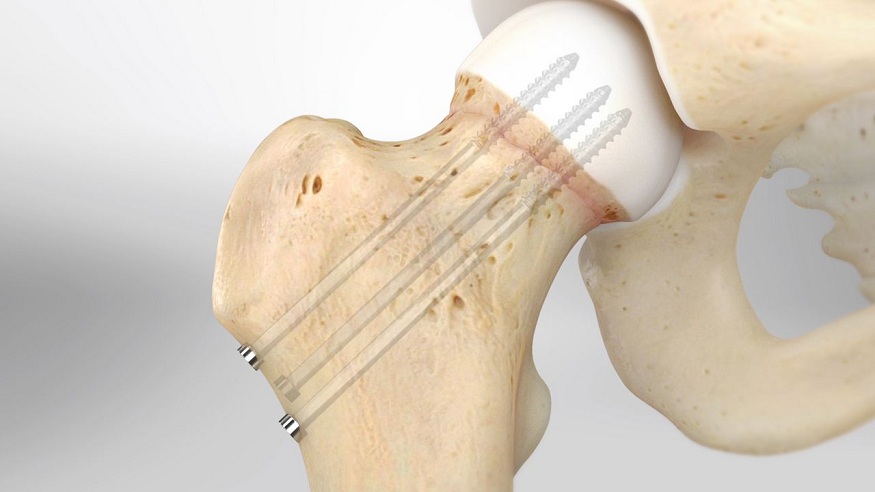Hip fractures are a significant health concern, especially among the elderly, and they can vary in location and severity. Broadly, hip fractures are categorized based on where the break occurs in the hipbone. The most common types include intracapsular, extracapsular, and subtrochanteric fractures.
Falls are the primary cause of hip fractures, especially in the elderly. Factors contributing to falls include muscle weakness, impaired balance, vision problems, and environmental hazards such as slippery floors, loose rugs, or poor lighting.
Types of Hip Fractures
Extracapsular Fractures: These fractures occur outside the joint capsule. The two main types are intertrochanteric and subtrochanteric fractures. Intertrochanteric fractures happen between the greater and lesser trochanters, while subtrochanteric fractures occur just below the lesser trochanter. These fractures often result from high-energy trauma and can be more stable than intracapsular fractures.
Subtrochanteric Fractures: Located just below the lesser trochanter, these are less common but can be severe due to the role of the femur in weight-bearing. Subtrochanteric fractures often require surgical intervention for stabilization and proper healing.
Pathological Fractures: These fractures occur in weakened bones affected by underlying conditions such as osteoporosis, bone tumors, or metabolic bone diseases like Paget’s disease. The weakened bone structure makes these fractures more susceptible to minor trauma.
If you are wondering what makes hip fractures so dangerous, the combination of physical, surgical, and psychological factors makes hip fractures exceptionally dangerous and challenging for individuals, particularly the elderly, often resulting in a significant decline in health and functionality.
What Is the Best Treatment for Fractures?
The type of fracture influences the treatment approach. Surgical intervention is often necessary, especially for displaced fractures, to restore the normal anatomy of the hip. For intracapsular fractures, options may include internal fixation, where screws or pins are used to stabilize the bone fragments, or hip replacement surgery in severe cases. Extracapsular fractures might be treated with fixation devices like nails, plates, or screws.
Prevention strategies involve a multifaceted approach targeting these causes. It includes a balanced diet rich in calcium and vitamin D, regular weight-bearing exercises to improve bone density and muscle strength, removing environmental hazards at home, managing underlying medical conditions, and regular health check-ups to monitor bone health and address any issues early on. Additionally, fall prevention strategies like improving balance, using assistive devices, and ensuring a safe environment can significantly reduce the risk of hip fractures, particularly in the elderly population.
How to Avoid Hip Fractures
Fall Prevention Strategies: Most hip fractures, especially among older adults, result from falls. Minimizing fall risks involves modifying the home environment by removing hazards, installing grab bars, improving lighting, and using non-slip rugs. Proper footwear and assistive devices like canes or walkers can enhance stability and prevent accidental falls.
Medication Review: Certain medications, especially those that affect balance or weaken bones, may increase the risk of falls and fractures. Regular medication reviews with healthcare providers help identify drugs that might contribute to falls and fractures. Adjustments or alternative medications can be considered.
Vision and Hearing Checks: Poor vision or hearing impairments can contribute to falls. Regular check-ups and corrective measures such as glasses, hearing aids, or other assistive devices are essential to maintain sensory functions and reduce fall risks.
Limiting Alcohol and Tobacco: Excessive alcohol consumption weakens bones and increases the risk of falls. Similarly, smoking impedes bone health by decreasing bone density. Limiting alcohol intake and quitting smoking can significantly contribute to reducing the risk of hip fractures.
Maintaining a Healthy Body Weight: Both obesity and being underweight can increase the risk of hip fractures. Obesity strains bones, while being underweight may indicate poor bone health. Maintaining a healthy weight through a balanced diet and regular exercise supports bone health.
Finally, hip fractures can lower the quality of your life, but consulting healthcare providers for personalized guidance and consistently implementing these measures are key to safeguarding against hip fractures.
You may also like
-
Ayurvedic Head Massage: Rejuvenate Your Mind and Body with Herbal Oils
-
ARE NICOTINE POUCHES A SAFER ALTERNATIVE TO SMOKING? INSIGHTS FOR CANADIAN USERS
-
Why Managed IT Services Are Critical for Medical Practices
-
From IV to Topical: The Rise of NAD⁺ in Skincare Products
-
Long-Term Benefits of Dental Implants: Why They’re Worth the Investment

